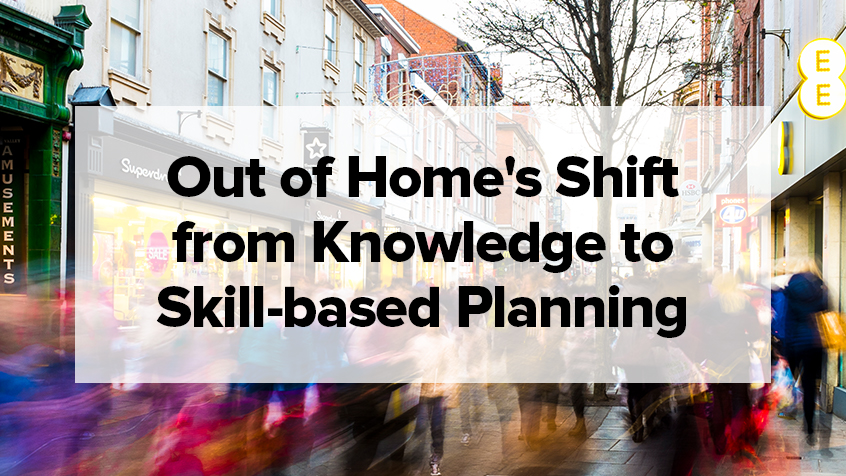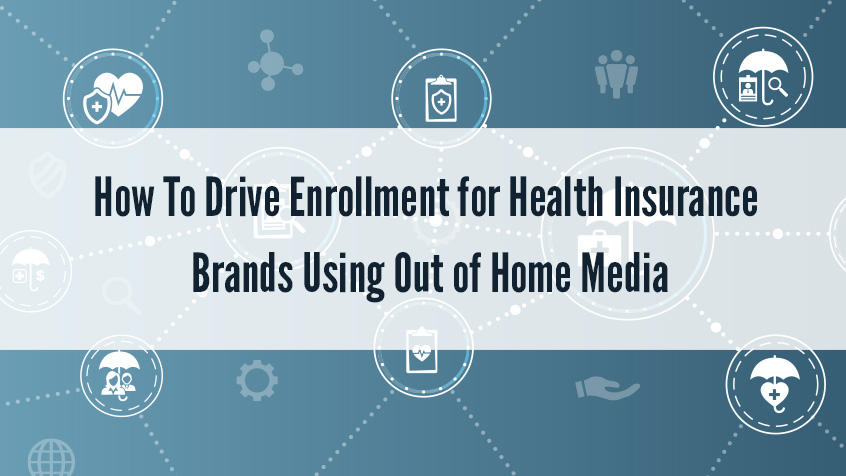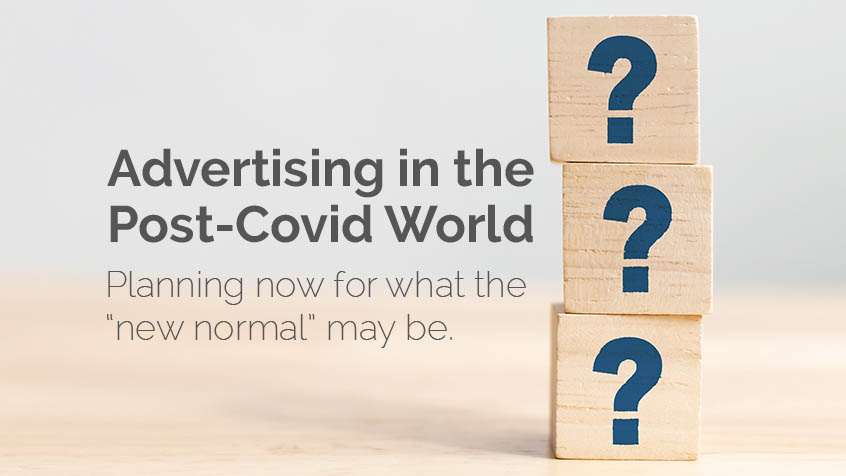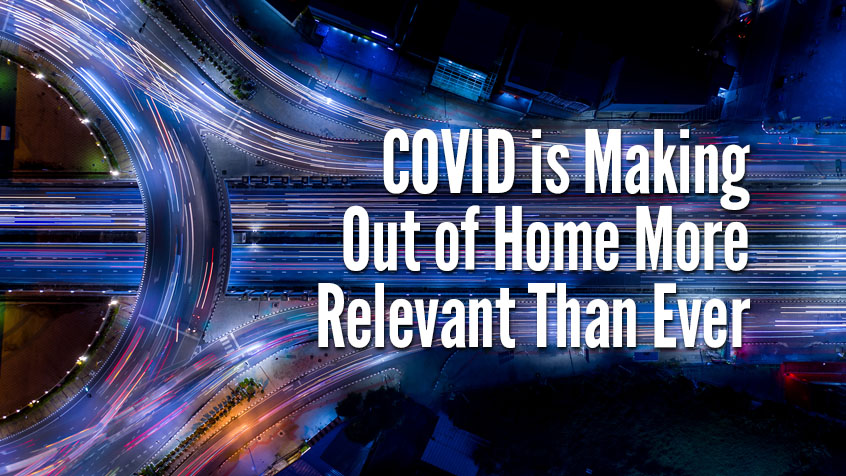The digital world has shifted the way that we all think about reaching consumers. Today, we can dig into deep levels of data and analyze critical information that gives us incredible insights into customer behaviors. For planners and marketers, these insights are valuable for strengthening the foundation and effectiveness of campaigns.
Out of home advertising is a crucial piece of the marketing mix and, if used correctly, can be a massive catalyst for brand awareness and prospect conversion. In fact, the availability of big data via mobile devices and geofencing provides incredible detail. Marketers can tell when a customer sees a retailer’s billboard ad then proceeds to walk into the retailer’s store. It’s proof that OOH advertising today embraces the future and uses new rising technologies as a catalyst for success and ROI growth.
The average consumer spends 70% of their time out of their home, and being able to reach them with relevant content or tell a brand story they can relate to makes OOH a key tool in the marketing utility belt. We’re going to take a look at how OOH planning has changed rapidly over the last 20 years (and even more so in the last 10) to become more skills-based and how that has reshaped strategies and planning methods.
Skill-Based Planning vs. Knowledge-Based Planning
In the past, OOH advertising was fueled by knowledge-based planning. Marketers would look at a map, find highways and other high-traffic areas, then try to plan billboard campaigns by coordinating placement with highway exits and popular stopping-spots. This old-school “pins-on-the-map” method was primarily fueled by local market knowledge. It required planners to have a deep understanding of local areas or connections with local media owners.

Today, this knowledge-based planning has shifted to skill-based planning. Local market knowledge is giving way to the need to continually explore, research and learn new platforms. Furthermore, it’s the need to understand new paradigms that break down audiences’ behavior and inform how to best reach them. Instead of looking at a map and pinning possible billboard points, marketers are utilizing data to create compelling location-based advertisements.
Mobile, geolocation, trip history/GPS, census and consumer behavior data have all become crucial components in OOH advertising strategies. By crunching this data to determine behavior points, marketers can start to answer big questions relating to consumer behavior. It’s not enough to know how many people are walking by a billboard; you must ask and understand:
- “Why are they at this location?”
- “What are they most likely to be doing?”
- “What are their commute patterns?”
- “Where did they come from?”
- “Where are they heading?”
- “What are their likes and dislikes?”
The ability to determine these consumer behavior patterns has reshaped the way that we target consumers with OOH advertising.
What Does Skill-Based Planning Look Like?
Positioning OOH advertising using skill-based planning is a complex process. The goal, of course, is to position ads where the right consumers will notice and consume the advertising, while simultaneously targeting critical points during their customer journey. These critical points are often places where they are most likely to spend the disposable income.
To do this, OOH marketers start by understanding customers’ behaviors and where they are going to be. Using census and geolocation data to determine audience locations (which is where tools like Geopath come in handy) marketers can start to use integrated data in agile ways to pinpoint hotspots for advertisements.
Make no mistake, location data is important, but it isn’t the only tool in a savvy marketer’s arsenal. Media research and insights into behavior and demographics provide data that lets marketers dig deep into consumer patterns, which results in higher ROI potential for campaigns.
What Are the Benefits of Skill-Based Planning?
All of this behavioral data that’s aggregated from mobile and GPS devices, paints a clearer picture and addresses those previously mentioned consumer behavior questions. It’s important to understand how behavioral data is generated and its level of accuracy.
Certain tools provide certain insights for planners. Tool research has become a key responsibility to guarantee the best set of data for clients’ requests and planning purposes—and there is no rest for the weary! Available tools and platforms are continually changing, and it has quickly become the responsibility of media planners to be educating themselves on these new sources how to use them for strategic planning. It’s no longer good enough to memorize all outdoor media suppliers in a market. Instead, planners must continue learning to learn.
Skill-based techniques have separated OOH advertising from other advertising methods. OOH can’t be disabled or adblocked and isn’t as invasive as some digital ad offerings. Plus, some digital methods can suffer from fragmentation and frictions related to AI and bots. Emerging technologies are contributing to OOH advertising’s growth as a more effective and more significant part of the marketing mix than their digital counterparts.
[bctt tweet=”Emerging technologies are contributing to OOH advertising’s growth as a more effective and more significant part of the marketing mix than their digital counterparts.” username=”emcoutdoor”]
A Basic Skill-Based OOH Planning Example
To further clarify the significance of skill-based OOH advertising planning, here’s how one of these strategies might take shape. Marketers should start by understanding a brand’s target audience, KPIs and campaign goals. Then consider creative and the story being told, as these drive placement recommendations and play a role in a campaign’s success.
After planners have a blueprint for their creative parameters, they are going to start by analyzing core OOH data. This includes:
- Census data
- Basic analytics
- Geolocation data
- Travel/Destination history
- Data models specific to the brand
Next, use behavior analysis tools as an added layer to location, census and demographic information. This makes it easier to locate audiences that fall within the brand’s target parameters. Here are examples of the types of data we’ll see:
- Trilateration-based carrier data
- SDKs (location data)
- Mobile behavioral data
- GPS data
- Other combined location and behavior-based data points
We now have a clear picture of what customers are going to be doing, where they are going, and how they purchase and consume products and services. By utilizing this data and smart creatives, and by linking mobile and OOH, we can layer a marketing campaign that’s specific, coordinated, and ROI-friendly. We can drill down to very specific successes, like measuring store or website visits following exposure to an OOH ad.
Conclusion
Out of home is one of the most valuable ad media spaces in our current age. Digital developments have provided a fantastic opportunity for planners to create compelling OOH campaigns that utilize big data and can measure ROI more accurately. By adapting to and optimizing available tools and data, OOH advertising has positioned itself as a future-proof advertising method. Brands and marketers shouldn’t be afraid to adapt to the tides of change.
Want to learn more about how our strategically researched and planned campaigns? Contact us below!


![Finding My Outdoor Voice in Out of Home [Intern Spotlight]](https://www.emcoutdoor.com/blog/wp-content/uploads/2018/11/header-1.jpg)


